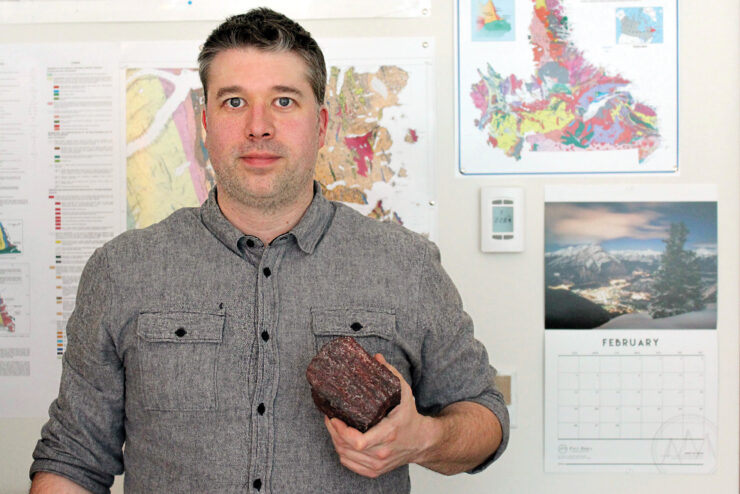Discovery reframes scientists’ understanding of planet’s evolution
Earlier this month an international team of geologists and microbiologists, one member hailing from the University of Ottawa, announced they had found evidence of early life that reframes scientists’ understanding of the primordial Earth.
The team recovered rock samples from Québec’s Nuvvuagittuq Greenstone Belt that contain the fossilized remnants of cells that predate the estimated dawn of life by up to 600 million years.
Jonathan O’Neil, an assistant professor in the department of Earth and Environmental Sciences at the U of O, played a critical role in this groundbreaking discovery due in part to his intimate knowledge of this greenstone belt.
According to the team’s research, the belt represents the earliest known oceanic crust, with small filaments and tubes formed by bacteria living on iron. O’Neil believes that what his team discovered in the quartz of the belt are the oldest microfossils to this date and, ultimately, the oldest record of life on Earth.
O’Neil has been studying this belt for the last 12 years, and in 2008 proved that it contained some of the oldest rocks on the planet—its age and relative stability made it a prime candidate for the kind of fossils the team was looking for.
“If you want to know what the Earth was like four-plus billion years ago, then you’re going to need four-plus billion year-old rock,” said O’Neil. “It’s really an obvious target if you want to look at early life.”
While scientists believe that the Earth is approximately 4.6 billion years old, evidence up until now pegged the beginning of life almost a billion years after that point. However, O’Neil’s discovery suggests that life could have started much sooner, pointing to a much more hospitable environment than geologists had suspected.
“We now know life started extremely early on the planet and we know some of the environments it could have started (in),” said O’Neil. “We now have a place we can study to better understand what kind of environment life could have started in and why.”
Despite this groundbreaking new research, O’Neil warns that what these findings can prove is limited. However, the speed at which life formed on Earth could mean the conditions needed for genesis are more common than we believed.
“4.4 billion years ago the moon was formed by a giant impact,” said O’Neil. “So if life was there at that time it was wiped out. Life reclaimed the planet about 100 million years after that … extremely, extremely fast. So if it happened here I don’t see why it couldn’t happen somewhere else.”
While evidence of life on other planets is still a ways off, O’Neil believes that the excitement for these discoveries transcends the geological community and reframes humanity’s place in the universe.
“It’s our origin. It’s trying to understand how our planet evolved. It puts humanity in perspective. I think it’s pretty mind boggling.”
You can read more about O’Neil’s findings in the current issue of Nature.





